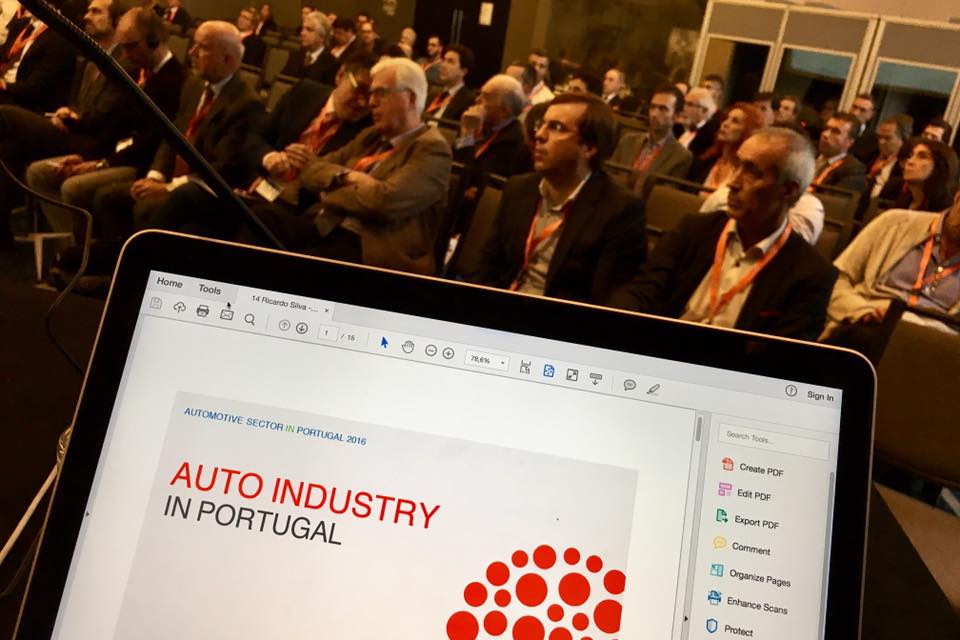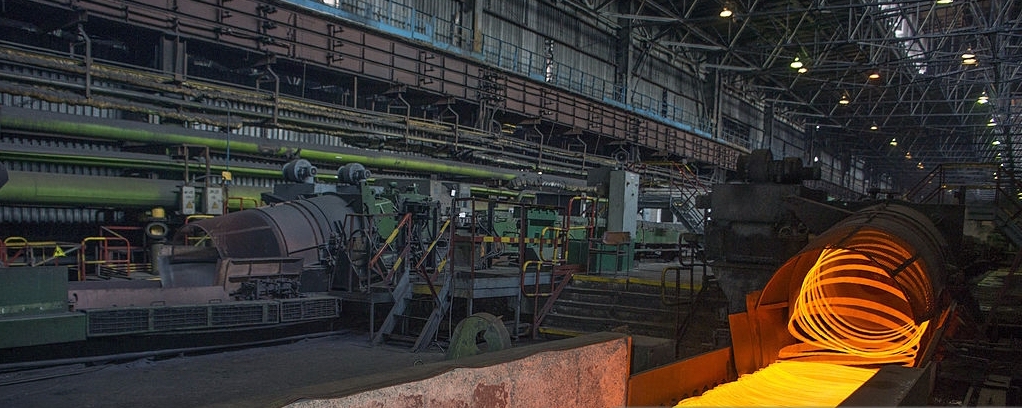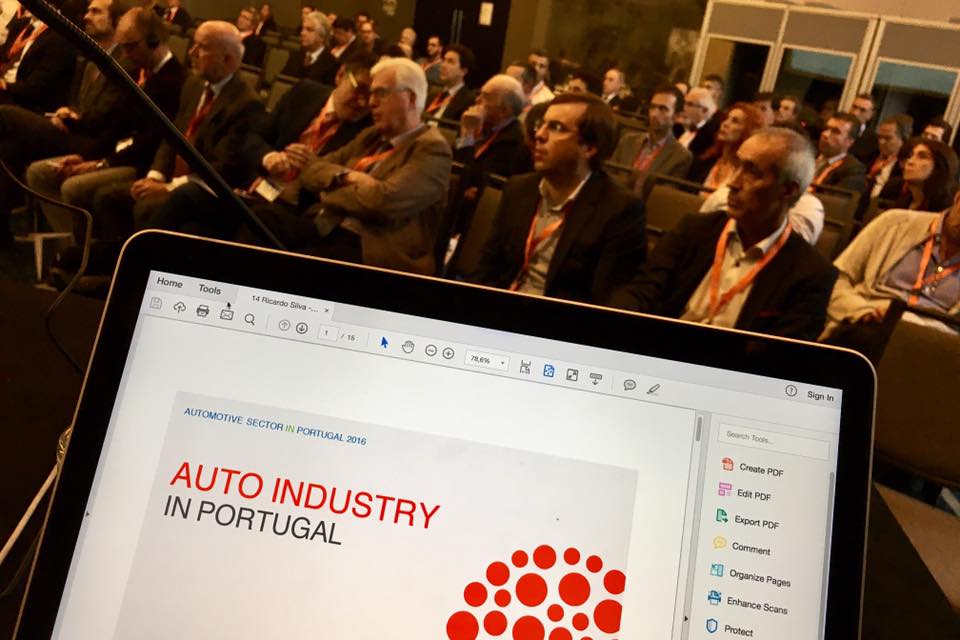
High value key for wire rod profitability: ArcelorMittal
The European wire rod market is still subject to pressure from competitive imports and overcapacity, resulting in a focus on higher value products as the key opportunity for profitability in the market, Javier Alvarez-Linera Prado, of ArcelorMittal long products Southern Europe, said at the EUROMETAL Steel Net Forum Iberia in Porto Friday.
Prado said ArcelorMittal will focus on high value wire rod products in a bid to improve profitability, as the overcapacity in lower quality wire rod is expected to continue. Furthermore, increases in raw material prices are expected to squeeze margins more and imports could still continue to plague the sector, he added. “We need to go beyond traditional drivers,” he said, citing improvements in productivity and more value added products as alternatives.
He pointed to positive growth in the automotive and construction sectors as representing potential opportunities for growth in wire rod.
However, risks remain for the product over the next few years. Europe’s wire rod market currently has a 25 million metric ton installed capacity, with apparent consumption standing at only 15 million mt. This 10 million mt excess in capacity, coupled with rising imports, and a decline in exports owing to issues in Algeria, threatens the construction steel product, he said.
“If we still have overcapacity, plus imports, we will continue to be punished.” He said energy costs, particularly in southern Europe, pose further challenges — in that region energy costs account for 40% of overall production costs, compared to 25% in Germany, he noted. “We are competing on unfair ground with other countries,” he said.
In terms of curbing imports he urged the EU markets to come together and take advantage of proximity. “We don’t need commercial barriers but what we don’t want is unfair competition,” he concluded.
Erica Sesay, PLATTS
Growth seen in EU in 2017, but uncertainty looms: Eurofer
“Economic recovery is seen to be strengthening in Europe, but uncertainty looms in the steel sector, in light of Britain’s vote to leave the European Union and the new US president elect, Donald Trump,” Jeroen Vermeji, Eurofer’s head of economic studies, said at the EUROMETAL Steel Net Forum in Porto Friday.
Eurofer said a stronger industry improvement is expected in 2017, based on the third-quarter. Steel using sectors have been growing 2.5% in 2016, with the automotive sector currently at its peak since the pre-crisis level — the only steel using sector to have achieved this.
Eurofer also expects exports to be in a position to increase next year, as the world economy gains momentum, adding that 2017 also looks to be a good year for private consumption. “I think we can be sure about the strength of private consumption,” he said.
Despite signs of confidence, it is currently “impossible to assess the impact” of the latest turn of events. “If Trump imposes a ‘large economic box’ around the US, it could depress investments,” Vermeij noted. Post-Brexit jitters could also hurt steel demand, as the uncertainty could weigh on investment.
“The EU is divided more than ever,” and the relationship with Turkey is “fragile and definitely at risk,” he said, referring to Brexit and the refugee crisis in the region — President Erdogan’s post-coup crackdown has also led to fears in Europe over his increasing grip on power.
Vermeji said European apparent consumption is up 2.6% (2.1 million metric tons) year-on-year, in the first half of 2016. However, imports are growing faster than domestic demand and therefore are capturing most of the rise; imports grew by 11% in the same period (1.8 million mt). “We are not benefiting from the increase in demand,” he said.
Apparent steel consumption is expected to stay stable in 2017, with distributors and service centres currently holding high stock levels. However, real steel consumption is expected to grow by 2.4% on the back of the growth seen in steel using sectors, Vermeij concluded.
Erica Sesay, PLATTS

Challenges lie ahead for Iberian steel: industry executives
The steel sector in the Iberian peninsula will face various challenges in the coming year, industry executives at the EUROMETAL Steel Net Forum in Porto, Portugal, said last Friday. While ongoing issues such as lackluster demand and over-capacity are expected to persist, other challenges are likely to arise in the coming year, they said.
Mergers and acquisitions, plus anti-dumping measures are expected to be prominent in the European steel industry in 2017 but prices are not expected to increase sharply, speakers said. Carlos Vieira of Spain’s Gonvarri Steel Services told attendees that any consolidation would lead to the reduction of sourcing options for steel distributors, an issue which could be made worse by a spate of protectionism barriers expected next year.
The ongoing issue of Chinese over-capacity was, once again, a topic of discussion. Jens Lauber, ceo Tata Steel Distribution Europe and president of EUROMETAL, said: “overcapacity in China is a key factor to the destabilisation of the EU market,” adding that “EU producers are clearly in survival mode.”
The idea of generating value, as mentioned by other speakers at the meeting, was reiterated as a key strategy in improving profitability in the midst of the challenges ahead. “Europe needs a complete and strong value chain, with all participants to play their roles for value generation,” Lauber said.
Economic challenges are also looming, participants said. Fernando Pinto, president of Açomefer, the Portuguese association of wholesalers of steel, metals and tools, noted that the growth of Spanish and Portuguese GDP was positive in 2015, but that 2016 forecasts are negative, with Spanish growth receding to 3.1% for 2016 and Portugal’s expected to decline by 1.3%.
A further 2.2% decline is forecast for Spain in 2017, while an uptick of 1.6% is expected for Portugal in 2017.
Erica Sesay, PLATTS
German stockholders’ Q3 sales below prior year level
Inventories at German steel stockholders remained largely stable in Q3 this year compared to the same period last year, up by 0.5%, while sales saw a 2.4% y-o-y drop in Q3, according to latest figures from the stockholders’ association Bundesverband Deutscher Stahlhandel (BDS).
Stocks remained stable at 2.3 million metric tons in Q3, while sales fell to 893,327 mt, owing to lower sales of long products which saw a fall of 7% y-o-y to 286,304 mt. Flat products sales went down by 2.1% y-o-y.
Stocks of long products grew by 2% y-o-y to 839,907 mt in Q3, whereas flat products remained stable at 1.4 million mt.
In month-on-month comparison, stocks of long steel products went down by 7.9% to 790,022 mt in September, while flat products fell by 1.9% to 1.4 million mt. Sales showed the opposite dynamic in September, indicating a continued upwards trend after the summer slowdown. Sales of long products grew by 1.8% m-o-m to 295,150 mt, whereas flats rose by 3.3% m-o-m to 545,648.
Laura Varriale, PLATTS
Positive article in stahlmarkt based on interview with Jens Lauber
Please find attached the article in stahlmarkt following your interview with them during the Stahl Tag event in September.
stahlmarkt (steel trade press; paid circulation: 7,300. Read by decision makers in the German steel industry)
Headline and date: ‘No hiding from global competition – Tata Steel prepares for the future’ on 8 November 2016
Short summary: As Europe is still a highly open market and faces cheap imports, Jens Lauber from Tata Steel says international trade needs to be fair on a global scale. Tata Steel is developing new products such as Celsius 355 or Serica to face these challenges and remain competitive. Yet, according to Lauber it is not enough to just develop new products and offer them in a traditional way as new non-European players have entered the market, directly approaching customers or buying steel companies in Eastern Europe. Moreover, online sales and distribution will intensify with new players such as Alibaba entering the market.
As a result, new digital ways of bringing products into the markets are needed. In this regard, the customer is the most important part of the supply chain according to Lauber: New concepts and products need to be developed in strong cooperation with them. Furthermore, steel producers need to deeply network with their customers to be able to consider their steel demand within daily business. The aim is to generate value, offer new services and connect delivery logistics with the customer’s demand. In this regard, digitisation is a useful tool to fulfil new wishes and requirements of the customers. Humans are not replaced, but new possibilities of linking all steps of the supply chain are revealed. In the future, no company will be successful without deeply engaging with its customers as Europe is one of the most demanding markets when it comes to customer requirements. Thus, “we need to discuss with each other and find new ways together”, Lauber concludes.
stahlmarkt_no-hiding-from-global-competition
Kind regards,
Rob Simpson
Head of Media Relations, Europe
Tata Steel
Price recovery benefits Klöckner in Q3
Germany-based distributor and service center operator Klöckner & Co continued to improve its net and operating income (EBIDTA) in Q3, driven by steel price upswings and margin improvements, despite lower sales and volumes, CEO Gisbert Rühl said in a press call on Thursday.
The company expects an increase in EBIDTA to €180-190 million for 2016, but expects seasonally lower sales in Q4 (see related article).
According to Klöckner, positive price effects of €46 million in Q3 resulted in an EBIDTA of €71 million in total compared to Q3 last year. The increase was supported by the increased use of market-sensitive digital pricing tools, the company said. Klöckner’s net income went up to €31 million in Q3 from a loss of €9 million last year.
The proportion of sales generated digitally grew to 11% in Q3. As reported, Klöckner aims to achieve 50% of its trading online by 2019.
Shipments went down by 8.3% to 1.5 million metric tons y-o-y in Q3 due to the exit of the low margin business, according to the financial report. There has also been a quarter-on-quarter decrease because of seasonal declines in Europe and weaker demand for industrial products in the US. While prices have recovered compared to the beginning of the year, lower average sales prices resulted nevertheless in a 10.5 y-o-y decrease in sales to €1.4 billion.
“After the market- and restructuring-driven impacts of the past few years, our improved operating line-up is now increasingly visible in the results. By systematically implementing our digitalization strategy and the extension of business involving higher value-added products and services, we are working all out to ensure that the upward trend continues,” said Rühl.
As reported, Klöckner is currently expanding its aluminium trading and processing as the distributor sees a demand increase in aluminium of 20% by 2020. “However, aluminium will not replace steel,” emphasised Rühl.
Aluminium currently accounts for 7% of the company’s sales, while steel products account for around 80%.
Laura Varriale, PLATTS
US market uncertain, Europe brighter: Klöckner
Flat product prices are likely to stabilise in Europe until mid-next year, while the US market remains uncertain, Gisbert Rühl, CEO at German distributor and service centre Klöckner & Co. told Platts in a conference call on Thursday. Rühl suggested, however, that price decreases in the US have, nevertheless, hit rock bottom already.
“We are not pessimistic about next year. It is hard to forecast, but we basically expect a stable development in Europe,” said Rühl, adding that the US market will be dependent on an upswing from the industrial sector and a price recovery in oil and gas in particular.
Klöckner expects this year’s positive trend to continue in Q4, though with seasonally lower sales. “Q4 is typically the weakest quarter,” said Rühl. The distributor anticipates an operating income of between €180 million and €190 million, significantly above the previous year’s figure of €86 million, as well as a positive net income.
Despite the favourable forecast, the steel distributor remains bearish. “Pressure in the steel market will continue,” said Rühl. “Overcapacities will remain, but anti-dumping duties will help,” he added.
Current demand and the future outlook of Klöckner’s main markets – the US and Europe vary significantly. While consumer-based demand is solid in the US, demand from the heavy equipment and oil and gas sectors is expected to remain weak this year and they are likely to show no short-term uptick, affecting the heavy plate business in particular.
“It is surprising that the US market has been so disappointing. The development of secondary effects was worse than expected,” Rühl said.
In the US, positive noises are coming from the construction industry and automotive demand is likely to remain steady, while in contrast the manufacturing, energy and shipbuilding sectors are lacking an uptick.
Klöckner’s view on Europe looks brighter by comparison; apart from the energy industry, all sectors are seeing positive developments, while Germany’s shipbuilding industry is particularly strong. Real steel demand is estimated to increase in Europe by 2% until the end of the year, whereas US demand is forecast to dip by 3%. The European market accounts for 61% of Klöckner’s sales, the US for 38%.
Laura Varriale, PLATTS
AMCLN to acquire newly-formed oxycutting firm
ArcelorMittal CLN Distribuzione Italia (AMCLN) intends to acquire Acierplus, a newly constituted company, after the European Commission merger regulators approved the deal.
A person close to the deal disclosed that AMCLN is eying three plants that used to be part of a former company called Solustil that are focused on processed steel products for yellow goods and railway part components, a company that used to be owned by AMDS.
Solustil is a flat product metalworking company that stamps, bends, welds for the heavy good machineries, railways and energy sectors. The rest of its operations will be sold to a company called Cellino.
The deal is expected to be done by the end of this year.
AMCLN is a joint venture controlled by ArcelorMittal and Italy’s CLN Group, active in steel distribution through service centers. Acierplus will be focused in the steel distribution through oxycutting centres. Cellino is a metalwork company.
Annalisa Villa, PLATTS
Union-Stahl-Handel becomes ESH with international focus
The German cooperative Einkaufsbüro Deutscher Eisenhändler “E/D/E”, which purchases material on behalf of steel distributors and hardware companies, has relaunched its steel division Union-Stahl-Handel, now named ESH Euro Stahl-Handel (ESH), and given it a more international focus, the company confirmed to Platts Friday.
“Looking at overcapacities at European steel producers and ongoing consolidations, market conditions will continue to change. We want to be prepared for that. The new organisation improves our position to react flexibly and in a timely manner,” ESH managing director Heinz-Alfred Liebig told Platts.
Liebig said the company would intensify its relationships with international suppliers and is reacting to the changing requirements of its 160 members and prevailing market conditions through the reorganisation of steel purchasing.
ESH has changed its previous focus (as Union-Stahl-Handel) on rebar and mesh to now include products such as sections, tube, flat products and bar as well as core business.
ESH buys products in Europe and worldwide. “Looking beyond the borders in steel trading, especially in purchasing, is getting more and more important. We will, from now on, think in European dimensions with our partners and establish their relevance in international business accordingly,” said E/D/E board member Joachim Hiemeyer in a press note.
As reported, earlier this year Union Stahl-Handel saw a year-on-year fall of 11.2% to €816 million in 2015, but was able to increase sale volumes of rebar, tube and flat product while experiencing average product price falls of 11% over last year.
— Laura Varriale, PLATTS

Kallanish Europe Steel Markets 2016

Kallanish Europe Steel Markets 2016 will provide an unrivalled opportunity to network with
industry professionals, and hear insightful presentations on a range of key issues affecting the
European steel industry today. The conference will be simultaneously translated between
English and German.
Respected industry speakers will address steel industry supply and demand drivers, export
opportunities, import trends and trade barriers, the potential impact of China’s ‘Market economy
status’ approval, and the overall outlook for steel and raw materials prices for 2017.
23-24 November 2016 | Dusseldorf, Germany
TOPICS
- European steel market macro economic outlook
- End use sector growth and outlook for 2017
- Imports and China’s potential Market Economy Status
- Export opportunities
- Raw materials prices analysed
- European Automotive sector success story and drivers
- Construction sector growth and Germanys infrastructure plans
- Mechanical engineering sector dynamics and outlook
- Steel price outlook for 2017
VENUE DATE
Hilton Dusseldorf
Address: Georg-Glock-Straße 20, 40474
Düsseldorf, Germany
Phone: +49 211 43770



